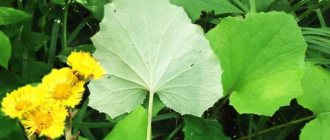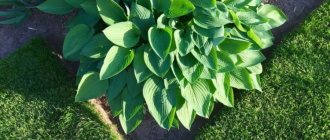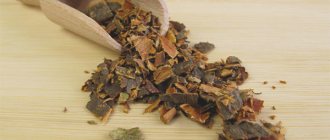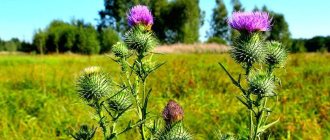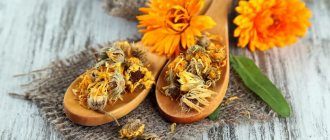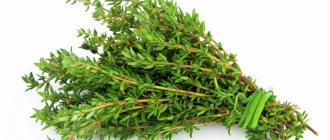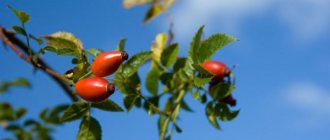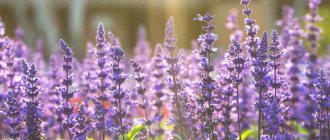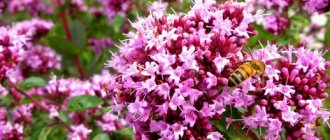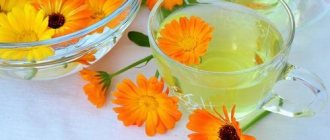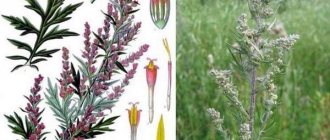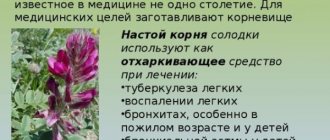The medicinal properties of chamomile have been known since ancient times. Hippocrates and Dioscorides used these mixtures to relieve cramps and pain, Avicenna used chamomile infusions to improve health, Pliny used them as an antidote for snake bites. Later, this herb was officially recognized as a strong anti-inflammatory and antibacterial agent.
Medicinal properties of chamomile
The most famous and widely used in medicine are the following beneficial properties of chamomile:
- Anti-inflammatory - studies have shown that chamomile extract has a stronger anti-inflammatory effect than a 0.25% hydrocortisone solution. Due to this, chamomile is used to treat skin inflammations, for washing eyes with barley or conjunctivitis, for drinking with various inflammatory diseases of the digestive tract - gastritis, enteritis, pancreatitis, as well as for rinsing the mouth and throat. Chamomile is also believed to have systemic anti-inflammatory effects. For example, when taken orally, it can affect those inflamed tissues and organs with which the drug does not directly contact. With this in mind, it is used for cystitis, kidney and liver diseases, for men - for prostatitis, for women - for inflammation of the ovaries. However, its effectiveness in these cases has not been confirmed;
- Calming, mild sedative effect, due to which chamomile tea has a beneficial effect on the condition of patients with depression or stress;
- Antibacterial properties - with direct contact, chamomile extract has been shown to inhibit the proliferation of Staphylococcus aureus, some types of streptococci, the causative agent of leptospirosis and caries. It is not known whether this property manifests itself directly in the tissues of the body, but chamomile is used very widely as a local antiseptic. In particular, its infusion is added to baby baths for newborns to prevent the child from coming into contact with various infectious agents;
- Antispasmodic activity - chamomile normalizes the smooth muscles of the intestines, uterus and some other internal organs, eliminates spasms and tones excessively relaxed muscles. Due to this property, it is used for colic, abdominal pain, and delayed menstruation, but the same therapeutic effect is associated with its contraindication for pregnant women - due to the tone of the uterus, a miscarriage or premature onset of labor may occur;
- Weak choleretic effect;
- Carminative effect, which helps relieve unpleasant symptoms of flatulence and constipation;
- Antiallergic activity, due to which chamomile is used to treat the skin for various allergic rashes. At the same time, chamomile itself can cause allergies, sometimes very strong and life-threatening, up to the development of anaphylactic shock, and therefore it should be used in this form with great caution. There are known fatal cases when parents tried to treat allergic rhinitis in a child with chamomile, and it was because of the use of chamomile that anaphylactic shock developed with a fatal outcome;
- Antioxidant activity and the ability to weaken the effect of free radicals due to the content of flavonoids and vitamin C.
It is also useful to read: All the medicinal properties of chamomile, both confirmed and unverified
Some sources also mention other medicinal properties of chamomile, for example, diaphoretic activity, analgesic effect, gastroprotective and antiviral effects.
It is due to the well-known beneficial properties of chamomile that various teas based on it have become very popular.
There are also claims that chamomile helps reduce the effects of diabetes by affecting the overall tone of the body and blood sugar levels.
However, there is no actual evidence of such properties of chamomile.
These medicinal properties are characteristic of chamomile and Roman chamomile.
Chamomile has a weak effect on the digestive tract and is characterized by a weak systemic effect on the body. Simply put, there is practically no sedative effect from its use. As a result, its medicinal use is limited only to external procedures - skin treatment, rinsing the throat or mouth.
If fragrant chamomile is used for preparing medicines, it is most often by mistake, when, when collected, it is confused with chamomile.
The main contraindications of chamomile are associated precisely with its beneficial properties, which in some patients can manifest themselves too violently and provoke dangerous conditions.
Description of chamomile
Chamomile is an annual plant of the Asteraceae family. Latin name Matricaria Chamomilla. It is found primarily in Eurasia, including European Russia, and North America. The plant has the following features:
- height 20-60 cm;
- strong, specific odor;
- petals are single-rowed white;
- thin stem without pubescence;
- leaves are ovate or broadly lanceolate;
- yellow basket-shaped inflorescence;
- propagated by seeds;
- leaves 2-5 cm long;
- thin root of the tap type.
The composition of chamomile includes the following substances:
- proteins;
- tannins;
- essential oils;
- coumarins;
- phytosterols;
- vitamins (PP, pyridoxine, ascorbic acid);
- carotene;
- polysaccharides;
- bioflavonoids.
Chamomile grows mainly in open areas (fields, wastelands, meadows), and is also found in gardens.
Contraindications to the use of chamomile preparations
The main and most strict contraindication for the use of chamomile is an allergy to it. With such a reaction, no chamomile preparations should be taken in any form.
Here you can see a rash that appeared after inhalation with chamomile.
Even if a patient develops a rash after drinking chamomile tea, and external use of the product is not accompanied by side effects, even external procedures - facial treatment, lubrication of abrasions and acne, bathing in a bath with chamomile - are prohibited. If allergies do not manifest themselves during such procedures, it is only a matter of time. The more often the patient comes into contact with this herb in any form, the sooner allergies will begin to occur, including during local procedures.
The important thing here is that some people may develop allergies to those components of chamomile that actually have a therapeutic effect. This is proof of the fact that contraindications are closely related to the healing properties of the plant.
This contraindication is relevant for all types of chamomile and for any method of its use.
An allergy can equally likely develop to a drug prepared from loose raw materials and to a product from a sachet.
Further, chamomile preparations should not be taken orally for diarrhea, as well as for a general tendency of the patient to diarrhea. Due to the ability of chamomile to tone the intestinal muscles, it can have a laxative effect.
On a note
Often, diarrhea is indicated among the indications for taking chamomile preparations; there is information and positive reviews when taking it specifically for diarrhea. This should be treated with caution: often all the benefits of chamomile remedies for diarrhea are limited to easing abdominal pain, although it does not provide a clear reduction in diarrhea. Be that as it may, if you have diarrhea, it is better not to take it.
For diarrhea, chamomile remedies can be used topically so that they do not enter the gastrointestinal tract. You can take baths with chamomile, gargle with it (if you then spit out the gargle solution), and treat the skin.
Chamomile is also contraindicated for children under 3 years of age for oral administration. In them, it especially often causes allergic reactions and diarrhea, despite the fact that a child in the first years of life can easily do without its use.
Again, the child can bathe in water with the addition of chamomile decoction, and the skin can be treated. Provided, of course, that he is not allergic to chamomile.
Chamomile, along with chamomile, is one of the most popular ingredients for preparing baths for infants.
These contraindications are relevant for pharmaceutical and Roman chamomile. Fragrant chamomile is contraindicated for oral administration, since its flowers do not contain azulene, which provides anti-inflammatory and antispasmodic effects. At the same time, the side effects from taking it can be the same as from using chamomile. As a result, it is not recommended to take it internally, while treating the skin, eyes, and mouth rinses are allowed.
It is also useful to read: What are the correct names for colored and multi-colored daisies?
Method of preparation and use
There are several ways to prepare homemade chamomile-based medicines:
- Decoction
. Pour 2 tbsp with a glass of boiling water. flowers, then simmer in a water bath for about half an hour. The cooled and strained liquid is brought to a volume of 200 ml using boiled water. The product can be used for baths, rinses, compresses, enemas, and wiping problem skin. It is acceptable to make a decoction for internal use, but it is important to know how much of the drug you need to drink. The recommended dose is 2-3 tbsp. up to three times a day. - Infusion
. Pour 250 ml of boiling water over a spoonful of dry raw materials and leave for an hour. The product is used for rinsing, douching, baths, and lotions. - Tea
, which can be done by pouring a teaspoon of inflorescences with a glass of boiling water. Leave for no more than 7-10 minutes.
Adding chamomile to herbal preparations is highly effective. Immortelle, calendula, birch buds, and mint herb can complement and enhance its effect.
Chamomile contraindications for women
For women, chamomile is contraindicated in several cases:
- During pregnancy - due to its ability to increase the activity of the muscles of the uterus, chamomile can cause miscarriage in the early stages, or premature birth in the last weeks of pregnancy;
- For various pains in the lower abdomen, with discharge, the nature and causes of which are not clear. To treat such diseases, chamomile can be taken orally only as directed by a doctor;
- For douching - today it has been shown that the harm from these procedures, regardless of what solution they are used with, significantly exceeds the benefit that a medicine, including chamomile, can provide. Despite the fact that in folk medicine, douching is considered one of the most significant procedures for the treatment of female diseases, an unambiguous connection has been established between the frequency of their implementation and various pathologies - endometriosis, cervical inflammation, cancer.
It is also not recommended to use chamomile internally during lactation, since even without affecting the mother’s condition, chamomile can affect the child, causing him diarrhea or allergies. This is due to the fact that its active components can penetrate into breast milk, and with it into the baby’s digestive tract.
Shattering in an infant in response to the mother taking chamomile is a common occurrence.
It is also undesirable to use chamomile if there is too much discharge during menstruation. Stimulating the activity of the uterus in this case will lead to an increase in the discharge itself.
The last two warnings are not clear contraindications, but they must be taken into account when planning to take chamomile preparations.
The use of chamomile
Chamomile is used in the form of a decoction or infusion in alcohol or water. It is also brewed as tea. The method of use of this plant depends on what disease or symptom needs to be cured. Sometimes this plant component is combined with other phytoraw materials. However, this representative of the Astrov family is quite effective in itself, so it can be used independently, acting as the only component of the herbal medicine.
Chamomile decoction
Chamomile is used internally and externally. Compresses and rubbing, as well as baths from it, promote the healing of wounds and ulcers, they dry and disinfect. Chamomile decoction is no less popular for cosmetic purposes. Lotions and tonics are made from it, and you can use it to wash your face if your skin is oily and prone to rashes. Rinsing your hair with this decoction helps remove redness and also gives your hair a shiny and healthy look.
Taking chamomile decoction orally, despite all the usefulness of this remedy, should not be uncontrolled and chaotic. In moderation, it promotes the healing of stomach ulcers and also helps the production of gastric juice. To improve the functioning of the gastrointestinal tract, you need to take chamomile decoction daily half an hour before meals.
For sedative purposes, it should be taken an hour and a half before bedtime.
Most often, chamomile is not drunk in its pure form, but added to tea or made as one of the components of a herbal remedy. The decoction is good to gargle with a cold or sore throat, as well as the gums and oral cavity in case of stomatitis or other inflammatory or infectious diseases of the mucous membrane.
For thrush, chamomile decoction relieves itching and burning sensation, which is why baths with douching are a favorite method of folk treatment.
Camomile tea
Chamomile infusion is no less useful and highly effective than the decoction. For example, a light infusion of this flower relieves intestinal colic. This is especially true for infants aged 2 to 6 months. You need to pour 1 teaspoon of dried chamomile blossom with 1 glass of hot water, cover with a saucer and leave for half an hour. Then strain and cool to room temperature. Before giving this product to your baby, it must be diluted with boiled water until a light, yellowish tint is obtained. You need to give your child tea after every meal - this will reduce gas and bloating.
The classic version of chamomile infusion is prepared using 2 teaspoons of dried flowers and 1 glass of water. It is advisable to infuse it in a thermos or wrap it up and then put it in a warm place. The infusion is ready after 2-3 hours. Chamomile infusion can be flavored with honey and lemon; such additives will make it tastier and, in some cases, healthier. The scope of its application is unusually wide. So, if menstruation is too long, heavy or painful, you need to take an infusion of 100 ml 4 times a day. Spasms and gastrointestinal disorders are cured by taking 70 ml of infusion four times a day. If you need a good night's sleep, but feel nervous tension in the evening, you should take 100 ml of this infusion an hour before bedtime.
For conjunctivitis, you can wash your eyes with the infusion. The procedure must be repeated every 2-3 hours. And for throat diseases, you should rinse your nasopharynx with this remedy at least 3 times a day. There are no strict restrictions for external use of the infusion.
For hemorrhoids, constipation, and other intestinal problems, enemas with chamomile infusion will be useful.
An alcoholic infusion of chamomile is diluted with water in the proportion of 2 teaspoons to 1 glass of water and used externally - for rinsing, compresses or disinfection. Of course, you cannot wash your eyes with it, since alcohol, even in small quantities, will cause a burn.
Alcohol and water infusions of chamomile are excellent for acne, boils and other skin rashes and dermatitis. The scope of this product is very wide, as is the range of its beneficial effects.
Douching with chamomile products
Chamomile deserves special attention as a means of treating ailments of the female genital area. As mentioned at the beginning of the article, this area was the first area of medicinal use of this plant.
Since chamomile decoction has soothing and anti-inflammatory properties, it is actively used in gynecology. Its advantage is that the product does not irritate the mucous membrane at all and does not cause discomfort.
A decoction of chamomile flowers for douching is prepared from 2 tablespoons of phyto-raw materials.
taken in 5 glasses of water. The medicine is prepared in an enamel container. After boiling, the broth should sit for half an hour. It must be strained before use. If it is not possible to brew chamomile immediately before the douching session, the decoction can be stored for no more than 72 hours in a dark, cool place. It is heated before use. To increase effectiveness, you need to douche for 15 minutes. Despite the mildness of the effect, the course of procedures should not exceed 2 weeks, otherwise changes will occur in the vaginal microflora. For all its benefits, chamomile decoction is more of an auxiliary remedy. It cannot replace pharmacological or hormonal therapy, or act as an antiviral drug .
Chamomile tea
Chamomile tea is an aid in eliminating many unpleasant symptoms - disorders of the gastrointestinal tract, increased nervous tension, insomnia and others. It relieves spasm, inflammation and irritation. Herbal tea can be prepared exclusively from chamomile, or from a herbal mixture, one of the components of which is chamomile flowers.
Taking such a drink is useful for those who want to protect themselves from the appearance of kidney stones and bile stagnation, as well as for people with weather sensitivity, frequent digestive disorders, or those who feel nervous. For colds, this remedy acts as a powerful immunomodulator.
We recommend reading: Herbs to boost immunity: what are the benefits of natural immunomodulators. The immune system of the human body is a kind of “shield” that reflects all attacks and negative influences from the outside. She is one of the most perfect in the entire living world...
Contraindications for various chamomile preparations
It is also important to remember that the different properties of chamomile - both medicinal and harmful - manifest themselves differently with different methods of its preparation.
Chamomile infusion is considered the most beneficial, but also the one that most often causes side effects.
For example, chamomile decoction is considered the safest, in which the largest number of potential allergens are decomposed, and the flowers themselves are effectively disinfected. Infusions and tinctures have the greatest number of contraindications.
For example:
- Chamomile decoction and tea are contraindicated in the same cases when chamomile is contraindicated for use in general. They have no specific contraindications;
- Chamomile infusion is contraindicated for oral administration. This is due to the fact that it may contain various contaminants that are not neutralized when infused in cold water and can have a dangerous effect on the body if they enter the digestive tract;
- Alcohol tincture of chamomile is contraindicated for oral administration to children under 12 years of age, as well as for treating any mucous membranes - rinsing the mouth and throat, washing the eyes, and washing. Upon contact with mucous membranes, alcohol can cause burns.
The healing properties and contraindications of chamomile tea do not depend on whether bulk raw materials are used for its preparation, or flowers in bags. Granulated tea that claims to contain chamomile (for example, Hipp tea with chamomile) usually has no contraindications, since the content of active chamomile components in it is very small. Of course, such tea has practically no medicinal properties.
Granulated children's teas are much safer than those prepared from natural raw materials. But their benefits are much less.
Contraindications for complex products, which include chamomile only as one of the components, consist of restrictions on the intake of each of the components.
For example, Tibetan balm with immortelle, chamomile, honey, birch buds and St. John's wort is contraindicated in all cases in which chamomile, St. John's wort, immortelle herb, honey and birch buds separately are contraindicated. This brew should not be drunk if you are allergic to any of the components, during pregnancy, for children under 12 years of age (contraindicated for immortelle), with bipolar depression or taking antidepressants (contraindicated for St. John's wort).
Likewise, if the recipe contains, in addition to chamomile, calendula, mint leaves, sage, oak bark and any other components, it is necessary to take into account the contraindications of each of them. Sometimes this is difficult, and therefore, in the absence of appropriate knowledge, it is safer to use ready-made, proven preparations, for which consumption restrictions have already been tested and established.
Chamomile in cosmetology
Chamomile is no less in demand in the cosmetology industry. The plant extract is used in the manufacture of soap, creams for adults and children, lotions, oils, tonics, and decorative cosmetics. Chamomile is often included in the composition of shampoos, conditioners, shower gels, toothpastes and many other products that people are used to using every day.
In the old days, girls washed their hair with chamomile infusion to give their hair a golden shine. Modern manufacturers have adopted a long-standing tradition and add plant concentrate to hair coloring products. A series of cosmetic products are created based on chamomile decoction to nourish dry skin, since the plant has the ability to soften and moisturize the epidermis. Chamomile flower bath foam relaxes and promotes deep sleep. In addition, the plant extract is included in creams and ointments with anti-inflammatory, wound-healing and anti-allergic effects.
What diseases can be treated with chamomile?
The plant successfully copes with many problems in human health.
The following gastrointestinal tract diseases can be treated with chamomile in combination with other therapeutic options:
- gastritis, enterocolitis and stomach ulcers;
- colitis and pathologies of the pancreas;
- flatulence.
Internal use of the plant is also indicated for other diseases, for example, gynecological, liver and biliary tract. Externally, chamomile is used for allergic itchy dermatosis, stomatitis, gingivitis, periodontitis and toothache, tonsillitis and sore throat, vulvitis, colpitis and endocervicitis.
When you have a cold, chamomile helps you recover faster and improve your appetite, while at the same time improving the process of digesting food and assimilating it. At the same time, the product rids the intestines of harmful elements, normalizing weight and accelerating metabolic processes.
The effect of the plant will be enhanced if it is used together with herbs such as yarrow and calendula.
